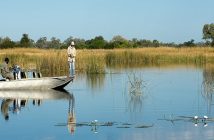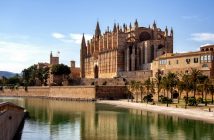In mere minutes on the metro at a happy 35DKK (roughly £4), arriving into Copenhagen from Kastrup airport couldn’t be easier. From baggage re-claim to the central square of Kongens Nytorv – you’ll likely be here in less time than it takes to walk from Gatwick North’s security to your airline departure gate.
Copenhagen is a city of raw charm. Waterways provide a gentle under-current to complement the relative quiet of this metropolitan life. Here there are no noticeable planes overheard and a distinct lack of screaming sirens; the atmosphere is alive but also peacefully at-one.
My main premise for visiting this weekend is lunch. A much-anticipated culinary adventure swept up in a ballet of hard-to-forget service. We are at Noma: a world-stage of gastronomic prowess re-opened after a year’s hiatus. In its new urban farm location, we are privy to ‘seafood season’ over 14 courses. Each is nothing short of exceptional. From (home-raised) ant-pesto painted liberally onto cod’s heads, six month-smoked plum skin decorating trout roe on starfish-shaped egg yolk, and sea snails with preserved roses served in miniature hand-made beeswax bowls, the courses that come and go elicit dilated pupils and tongues that continually tingle – a sense first awakened upon our opening glasses of energetic, natural Les Cogneaux, Ruppert Leroy Champagne.

Food in this part of the world is clearly a big deal, as is the world of natural wine. On our waiting staff’s recommendations, the next morning we explore Jægersborggade in the Nørrebro area of town, a hip-home to a brilliant array of natural wine bars (try Manfreds, Terroiristen and Antidote) alongside other quirky art and Danish fashion-filled boutiques. Foodie markets by the central station proffer more grab-and-go ‘open’ sandwiches and sweet-toothed friendly fare, while once the summer comes round a world of street-food can be explored at Copenhagen Street Food, a fixed site down by the water front, where the city sates itself more liberally from May through to December.
To survey the scene across the water in Sweden, twenty-four hours later we make a quick hop over ‘the bridge’ to Malmö. For a short weekend break, and as a first time visitor to this southerly point of Scandinavia, this curious underdog of a nearby city warrants comparable exploration given its easy proximity.

I must admit, I didn’t really get Malmö when we first arrived. Off the train (don’t forget your passport, train guards are suitably serious) the city is welcoming, but on this chilly Saturday it also seemed cold in character, too. Local direction leads us to the waterfront to witness the great expanse of grey-blue sea and a stroll past Sweden’s tallest tower – the ‘turning torso’. Perhaps we are just a little spoilt with the buildings that scrape high into our own respective cities (New York and London alike), but this seemed a bizarre curiosity to point-out. “We thought surely it was at least the name of a bar?” says one of my fellow country-hoppers, hopefully. Not an improbable suggestion for a city that hosted the Eurovision Song Contest in 2013.
We persist in our explorations, winding up at wooden decking along which locals and visitors are milling. A group of teenage girls sit in a circle of pop – both in the bottled and musical sense; runners cross the low-key mêlée determinedly, couples risk falling into the water at the expense of romantic selfies and a group of gung-ho males strip down to their undies in less than forgiving temperatures swiftly diving into the sea, one goose-bumped limb after another.

We grab a drink at Malmö’s equivalent of the Royal Festival Hall as crowds disappear into the auditorium – the rooftop bar too touristy to penetrate at this late afternoon hour. I bid farewell to my fellow wanderers and make my way to dinner at locally well-renowned Restaurant Västergatan – a small, unassuming indie spot home to modern Swedish cuisine, owned and run by sommelier Sophie Andersson (whose wine list is excellent) and husband chef Olle Ahnberg.
The menu here is set – four courses, paired with wine – the majority all natural, mirroring what we’d seen the day before in Denmark (the French Achard Vincent P’tite Gaby Clairette de Die, a méthode ancestrale sparkling, is particularly “wow”). The menu here in many respects is similar in essence to that of Noma, at a much more affordable price – tonight on offer is rainbow trout with beets and pickled-rose vinegar, chicken with wild garlic and fresh horseradish, cod with broccoli, daikon (winter radish) and lemon grass, and a lemon ice-cream with hazlenut and fennel. Such delight in this flavour-full find re-shapes my initial impressions of this city, further re-formed at nearby “Enoteca” – Sweden’s “best wine bar 2016”, and perusal of other surrounding quirky eateries (Bastard also comes well recommended).

At Hotel Duxiana, owned by one-time locally famed chocolatiers, now-turned mattress-magnates, that evening I dive into one of the biggest beds I’ve ever slept in, wishing hard for luxuriant sleep – and achieving exactly that. The quietness persists over an in-room bath and moment of appropriately crime-themed morning Swedish television. After relaxing in one of the ergonomically-apt elephant grey chairs (a whole exhibition to which the subject is dedicated back in Copenhagen’s Design Museum), I present myself in the lobby later, ready to take on anything the world or city cares to throw at me.
On Sunday I explore the city for what it really is, and it is here that my understanding of it rounds out. This is a city to live in. One to breathe in; to take up residence in. The scores of wonderful furniture boutiques here all proffering sassy Swedish design are enough to keep anyone busy for an afternoon – but it is also a joy to walk the streets under spring-born sunshine where good-looking city-dwellers are now out to play – sunglasses on and coffee or beer flowing.

After a more modern flirtation with Swedish cuisine the night before, those keen to sample something more traditional should seek out Bullen’s – a yesteryear café offering classic meatballs and Swedish fish soup for happy contrast between the two. Art-deco buildings litter the pavements and fast fashion can be found alongside higher-end Swedish propositions, which will cost you a darn-sight less here than they do at home. Finishing with a Fika at a vegan café back next to the hotel asserts the positive vibes that this town seems to readily demonstrate. My weekend is complete. Happily sated and very much scandi-satisfied.
Room rates at Duxiana start from 1690sek for a superior double and 2390sek for a suite. All prices include breakfast. For more information, visit www.malmo.hotelduxiana.com.
For more information about the cities, visit the official tourist sites, for Malmo at www.malmotown.com and Kane at www.visitskane.com.




